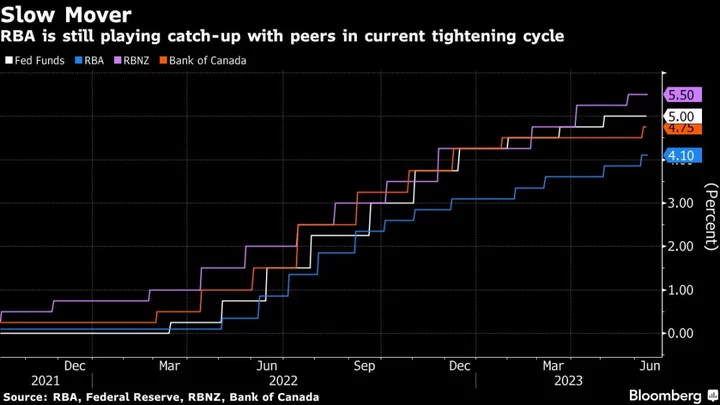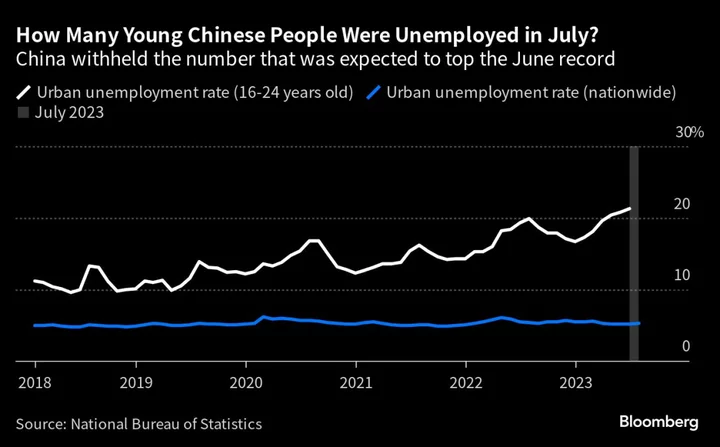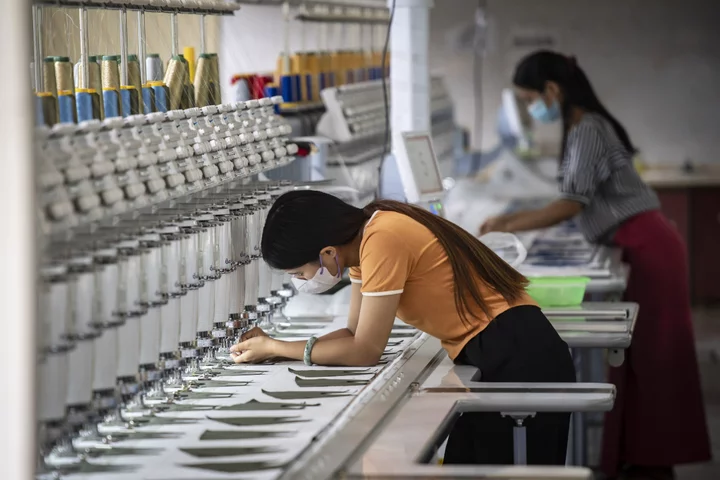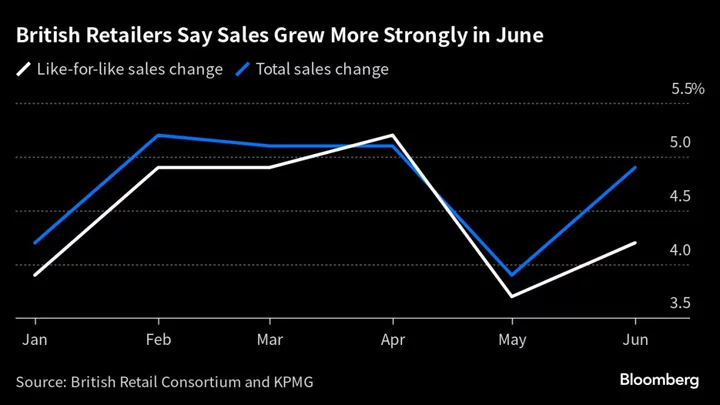Australian employment smashed expectations in May and unemployment surprisingly declined, bolstering the case for the Reserve Bank to raise interest rates further to counter inflationary pressures.
The currency advanced and three-year government bond yields spiked after data showed Thursday employers added 75,900 roles from a month earlier, more than four times the forecast gain. The jobless rate declined to 3.6%, having hovered in a range of 3.4%-3.7% since June last year.
The result intensifies pressure on the RBA to tighten policy further as it suggests additional wage increases ahead and more persistent inflation. That dovetails with renewed global hawkishness as the Federal Reserve projected borrowing costs will go higher than previously expected.
Overnight-indexed swaps show at least two more RBA hikes to 4.6% this year and the nation’s yield curve inverted for the first time since the 2008 global financial crisis as traders increasingly priced in the risk of a recession.
“Today’s data shows the tightness in the labor market will prompt the RBA to hike in July,” said Diana Mousina, deputy chief economist at AMP Capital Markets. “It probably confirms their bias that wages growth will increase to a level that’s not line with their inflation target.”
RBA Governor Philip Lowe has said the rate-setting board will closely monitor the economy and inflation and warned that further rate rises “may be required” to tame inflation despite 12 hikes over the past year.
The gap between yields on 10- and three-year Australian government bonds fell as low as minus two basis points on Thursday. The inversion was triggered by a jump in short-term yields as traders boosted bets on a more protracted rate cycle.
“The RBA’s change of tone last month has revealed a willingness to take policy more restrictive, more quickly,” said Kenneth Crompton, senior fixed income strategist at National Australia Bank Ltd. in Sydney. “All else equal, that does add to the risks of policy contributing to a recession in Australia.”
Employment strength has been a key factor in the RBA’s confidence that Australia can avoid a recession. Today’s figures showed that annual jobs growth rose to 3.4%, from 3.1% at the start of the year.
The data are a mixed blessing for the center-left Labor government. While lower unemployment is normally a positive, given it’s likely to trigger even higher borrowing costs Treasurer Jim Chalmers will be worried about the potential political fallout.
The RBA has hiked by 4 percentage points since May 2022 to take the cash rate to 4.1% as it grapples with sticky inflation. A Bloomberg survey of economists last week showed the risk of a recession jumped to the highest level since the pandemic amid concerns of further tightening.
The central bank is forecasting unemployment will climb to 4% by year’s end as rising borrowing costs drag on economic activity. Data out this week shows dark clouds are beginning to gather, with Australian business confidence slipping into negative territory and consumer sentiment near “recession lows.”
“We’ll soon start seeing some decent weakness in the labor force,” Mousina said. “The forward-looking indicators such as business surveys and jobs vacancies are already pointing down. Other timely data are beginning to turn.”
Bloomberg Economics estimates that jobs growth will need to average 2.8% a year, or 32,000 roles per month, to prevent unemployment rising further.
Thursday’s jobs report also showed:
- The number of employed people reached 14 million for the first time
- The participation rate rose to 66.9%
- Underemployment was 6.4% and underutilization stood at 10%
- Full-time roles surged 61,700 while part-time rose 14,300
- The employment to population ratio increased to 64.5%, a record high
- A greater share of women are employed than ever before, with their employment to population ratio and participation rate both at record highs in May
--With assistance from Tomoko Sato and Matthew Burgess.
(Adds comments from economists, market reaction.)









